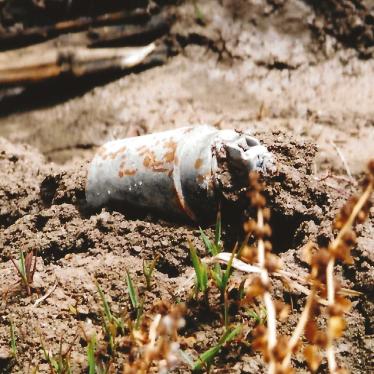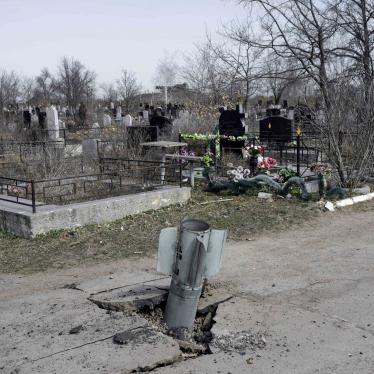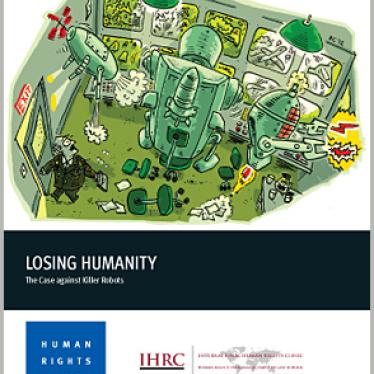Evidence indicates that Ukrainian government forces fired cluster munitions at Luhansk city in eastern Ukraine last week, killing two civilians and injuring two more. These weapons are banned by 116 countries because of the danger they pose to civilians.
Yesterday, the Organization for Security and Cooperation in Europe’s (OSCE) special monitoring mission in Ukraine reported that it found cluster munition remnants in a residential area of Luhansk’s Artemivskyi district after two attacks in the evening of January 27.
The OSCE mission identified the weapons used as 9M55K Smerch cluster munition rockets. These rockets are “designed to engage manpower and soft-skinned materiel in concentration areas,” by scattering 72 individual 9N235 submunitions, designed to fragment when they explode, according to the manufacturer. The weapons hit 7.5 kilometers southwest of Luhansk’s city center and impacted a roughly two-square-kilometer area.
Although the mission did not attribute responsibility for the attack, available information points strongly to the conclusion that government forces were responsible. The mission determined that the rockets had come from the north-northwest, which is consistent with photos published on social media immediately after the attack. Smerch rockets have a minimum range of 20 kilometers. According to maps published by the Ukrainian authorities, the area 20 kilometers and further north-northwest of the impact site was under their control. Additionally, OSCE monitors reported that they heard Smerch rockets being launched from the area north-northwest of Luhansk the day before the attack, further evidence that government forces had Smerch rocket launching systems in that area.
It is disturbing that Ukraine still uses cluster munitions, given the international condemnation of its earlier use. Journalists documented remnants of cluster munitions last July, and during an October field mission, Human Rights Watch documented use of the weapon in urban and rural areas by government forces and likely by Russia-backed separatist forces. Both sides have denied responsibility. Although the Ukrainian government appeared to take some steps to investigate Human Rights Watch findings – presented to civilian and military authorities in Kiev – its investigation was inadequate.
Human Rights Watch has reported on nearly every instance of cluster munitions use around the world dating to 1999 in Kosovo. In each case, the humanitarian impact has been dreadful and foreseeable. Cluster munitions indiscriminately scatter submunitions or bomblets over a wide area, posing an immediate threat to civilians. In the dozen incidents we investigated in Ukraine in October, at least six people were killed and dozens injured at the time of the attack, though the true numbers are probably higher.
When some submunitions fail to explode upon impact, they become de facto landmines, posing a threat to civilians post-conflict. The 9N235 submunition, the type used in this attack, is designed to self-destruct two minutes after being ejected from the rocket. Yet we found dozens of submunitions that failed to self-destruct during our investigation, confirming there is no “technical fix” to the problems of cluster munition use.
Neither Ukraine nor Russia is party to the treaty banning the weapon, the 2008 Convention on Cluster Munitions. It is time for both to foreswear cluster munitions, joining the scores of countries that already have.






